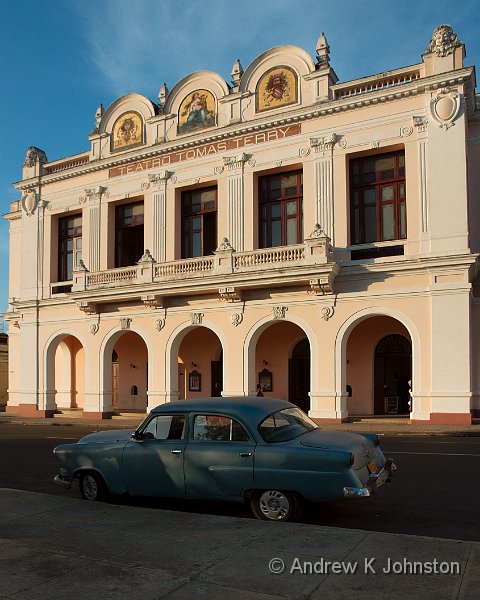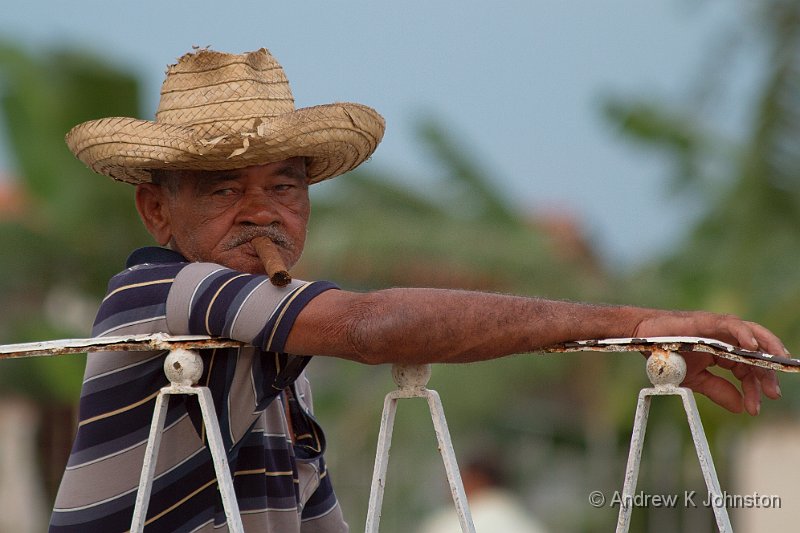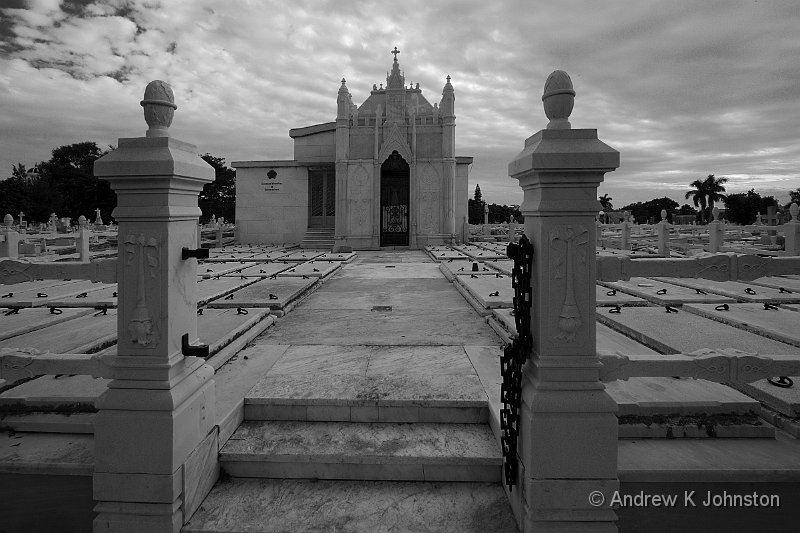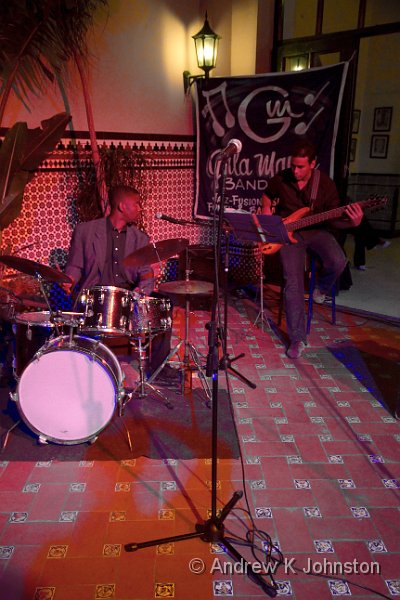
I’ve found the right collective noun for photographers: it has to be a “diffraction”, because they do have a tendency to spread out from a point. Like setting a group of small dogs loose in a wood full of squirrels…
The drive down from Vinales to Cienfuegos was long, boring and bumpy, not helped by a driver with the bladder of a camel. What is remarkable is how empty central Cuba is: only a very small fraction of the land visible from the motorway is under cultivation. This is in sharp contrast to every other Caribbean island I’ve visited, where almost every available square foot has some productive use, even if it’s only a couple of goats or banana plants. I expected to see mile after mile under sugar cane or similar, but instead you see a lot of scrubland.
Then, suddenly, about 20 miles from the south coast, things change. There’s rich and varied agriculture, and the architecture changes to what I think of as “generic Caribbean”: small square houses with flat or shallow pitched roofs.
Finally, Cienfuegos is different again: there are sprawling suburbs with the 60s blocks beloved of Communist countries, but the town centre and sea-front have a certain elegance, and are at least a little reminiscent of other Victorian sea-side resort towns, albeit without the big seafront hotels and casinos. It may still be poor, but it’s a definite notch up from Havana or Vinales.
Friday’s picture is of the Theatre in the central square. It’s not a misprint, but a very odd coincidence: Tomas Terry was a dodgy posh bloke who built a theatre, and of course Terry Thomas was an actor who played dodgy posh blokes.
View featured image in Album
After Vinales internet connectivity became more and more of a challenge. The Hotel Jagua in Cienfuegos was elegant and well-equipped, but very poorly stocked and staffed. One of the things they were out of were the tickets for computer use. Continue reading →
Monday, November 22, 2010 in
Cuba Travel Blog
Another shot from yesterday: the view from my hotel balcony at the Hotel Los Jazzmines, a panorama stitched from 5 shots. Scary fact: the TIF file generated by the stitching software was 148MB. That’s the downside of steadily growing image Continue reading →
Friday, November 19, 2010 in
Cuba Travel Blog,
Personal News
The update I wrote at about 7am yesterday turned out to be incorrect – the mist in Vinales Valley suddenly cleared, and we got some very good shots in the early morning light, with wisps of mist still visible. I’ll Continue reading →
This doesn’t need much explanation. Forgive the slight camera shake, but a 1950s Ford Consul does vibrate a bit. Who cares! Continue reading →
I wanted to use the shot of the old guy with the cigar to illustrate my main post, but this was arguably yesterday’s shot of the day. The buggy had just become trapped on the edge of a building while Continue reading →
After a long and slightly boring drive through Western Cuba, we’ve moved to Vinales, a wonderful valley between two ranges of low, rounded mountains known as “Los Organos”, because Spanish sailors thought the eroded limestone looked like church organs. Vinales Continue reading →
Lots of pictures of cars, so it’s difficult to choose a favourite at the moment. Here’s one which worked, showing the Capitolio (a copy of America’s Capitol) reflected in the bonnet of a nearby taxi of ancient vintage. The foyer Continue reading →
Wednesday, November 17, 2010 in
Cuba Travel Blog
Yesterday we went to visit the Necropolis Colon, Cuba’s largest cemetery (and effectively their national cemetery). It’s an interesting place, and I think I may have generated a couple of atmospheric shots, probably best in black and white. While I Continue reading →
The end of my first full day in Cuba has left me feeling a little sad. You often hear the phrase “faded grandeur”, but never have I been anywhere where it’s so markedly and consistently appropriate as here. This is Continue reading →
Tuesday, November 16, 2010 in
Cuba Travel Blog
Well I’ve reached Cuba safe and sound, and I’ve decided to undertake an experiment, writing a travel blog, with daily observations and hopefully at least one decent photo. Whether or not this works depends on my self discipline, the availability Continue reading →
Monday, November 15, 2010 in
Cuba Travel Blog
I’ve been playing around with the previous image a bit more, and I’ve come up with this version – taken from a single original RAW file, but processed twice as a sort of “pseudo HDR” to knock back the highlights Continue reading →
Sunday, October 31, 2010 in
Barbados,
Photography


 List
List Abstract
Abstract One+Abstract
One+Abstract










 Thoughts on the World (Main Feed)
Thoughts on the World (Main Feed) Main feed (direct XML)
Main feed (direct XML)